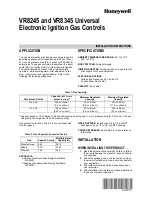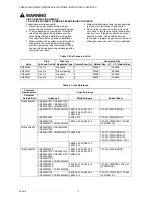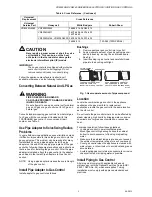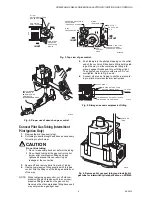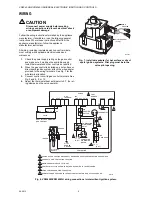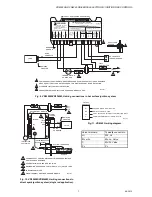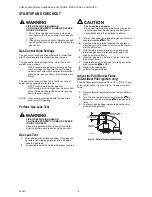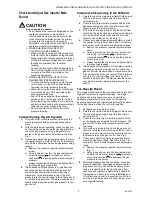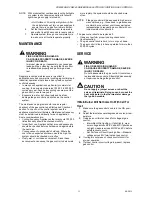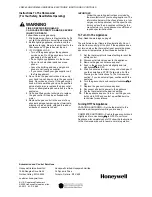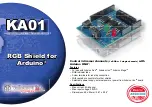
VR8245 AND VR8345 UNIVERSAL ELECTRONIC IGNITION GAS CONTROLS
11
69-2013
NOTE: With modules that continue spark until pilot lights
or system is shut down manually, pilot should
light when gas supply is turned on.
•
Hot Surface or Direct Spark Ignition
—After
the module locks out, turn on gas supply and
assure there is no gas flow to main burner.
6.
Set the thermostat below room temperature
and wait at least 45 seconds to reset system.
7.
Operate system through one complete cycle
to make sure all controls operate properly.
MAINTENANCE
WARNING
FIRE OR EXPLOSION HAZARD
CAN CAUSE PROPERTY DAMAGE, SEVERE
INJURY, OR DEATH
Improper cleaning or reassembly can cause gas
leakage. When cleaning, be sure that the control
is reassembled properly and perform gas leak
test.
Regular preventive maintenance is important in
applications such as commercial cooking, agricultural and
industrial operations that place a heavy load on system
controls because:
• In many such applications, particularly commercial
cooking, the equipment operates 100,000 to 200,000
cycles per year. Such heavy cycling can wear out the
gas control in one to two years.
• Exposure to water, dirt, chemicals and heat can
damage the gas control and shut down the control
system.
The maintenance program should include regular
checkout of the gas control; see Startup and Checkout
section. To check out the control system, see the
appliance manufacturer literature. Maintenance frequency
must be determined individually for each application.
Some considerations are:
•
Cycling frequency
. Appliances that may cycle 100,000
times annually should be checked monthly.
•
Intermittent use
. Appliances that are used seasonally
should be checked before shutdown and again before
the next use.
•
Consequence of unexpected shutdown
. Where the
cost of an unexpected shutdown would be high, the
system should be checked more often.
•
Dusty, wet, or corrosive environment
. Since these
environments can cause the gas control to deteriorate
more rapidly, the system should be checked more
often.
NOTE: If the gas control will be exposed to high ammo-
nia conditions, e.g., those used in greenhouses
or animal barns, contact your Honeywell sales
representative to request a gas control with cor-
rosion resistant construction.
The gas control should be replaced if:
• It does not perform properly during checkout or
troubleshooting.
• The gas control knob is hard to turn or push down.
• The gas control is likely to have operated for more than
200,000 cycles.
SERVICE
WARNING
FIRE OR EXPLOSION HAZARD
CAN CAUSE PROPERTY DAMAGE, SEVERE
INJURY OR DEATH
Do not disassemble the gas control; it contains no
replaceable components. Attempted disassembly
or repair can damage the gas control.
CAUTION
Do not apply a jumper across or short the
valve coil terminals. Doing so can burn out the
heat anticipator in the thermostat or damage
the ignition module.
If Main Burner Will Not Come On With Call For
Heat
1.
Make sure the gas control knob is in the ON posi-
tion.
2.
Adjust thermostat several degrees above room tem-
perature.
3.
Using an ac voltmeter, check for voltage at gas
control.
•
Intermittent Pilot Ignition
—If pilot lights, mea-
sure voltage across MV/PV and MV. If pilot does
not light, measure across MV/PV and PV before
safety lockout occurs.
•
Hot Surface or Direct Spark Ignition
—Measure
voltage across MV terminals at gas control.
4.
If voltage is not present, check control circuit for
pro-per operation.
5.
If proper control circuit voltage is present, replace
gas control.

